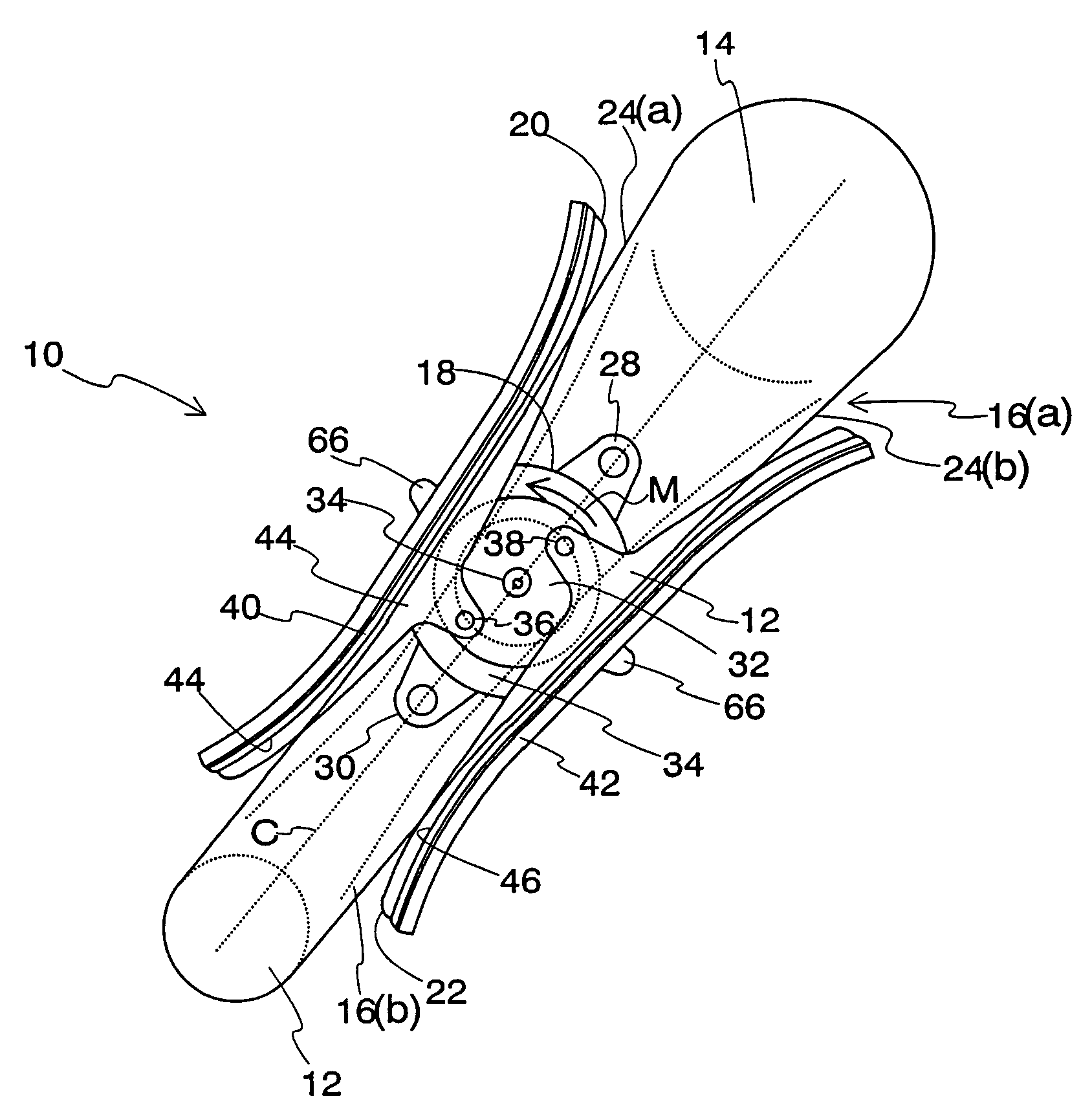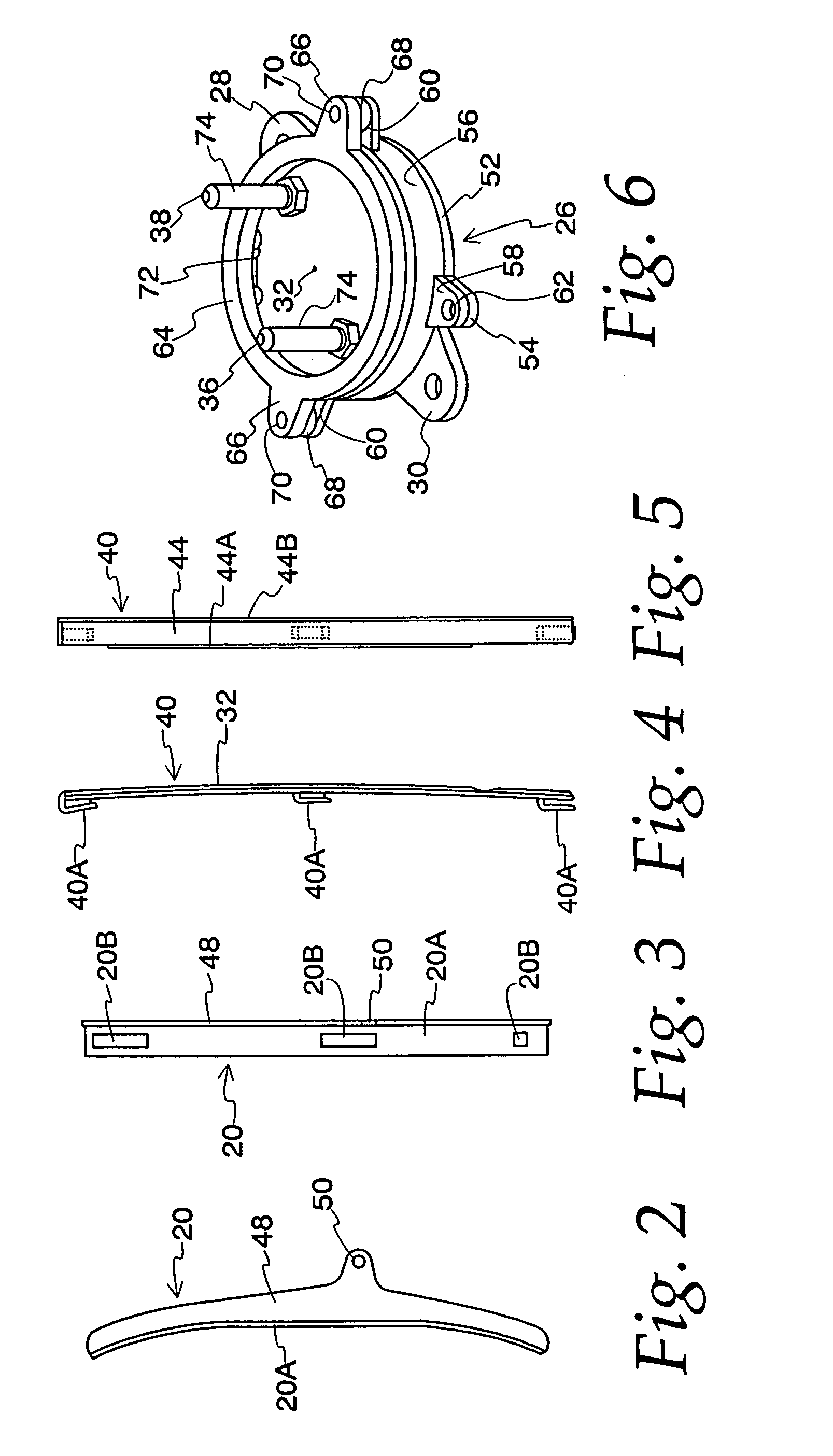Rotary actuating hydraulic tensioner
- Summary
- Abstract
- Description
- Claims
- Application Information
AI Technical Summary
Benefits of technology
Problems solved by technology
Method used
Image
Examples
Embodiment Construction
[0046]As shown in FIG. 1, an engine timing system 10 is represented generally by crankshaft sprocket 12 (the drive sprocket) and camshaft sprocket 14 (the driven sprocket). The path of a power transmission chain, i. e., a silent chain, roller chain or the like, is represented by broken chain line 16(a) and the path of the chain where the chain has become elongated as shown by the broken lines 16(b). One aspect of the rotary tensioner system of the present invention is shown with a rotary actuating tensioner 18 and two tensioner arms, 20 and 22.
[0047]In this aspect, the rotary actuating tensioner 18 is located between the strands of the chain 24(a) and 24(b) and between the two sprockets 12 and 14. The rotary actuator 18 is generally centered with respect to the center line C extending between the center of the drive sprocket 12 and the driven sprocket 14. The outer housing of the rotary actuating tensioner 18 possesses two mounting tabs 28 and 30 with mounting bores for attachment o...
PUM
 Login to View More
Login to View More Abstract
Description
Claims
Application Information
 Login to View More
Login to View More - R&D
- Intellectual Property
- Life Sciences
- Materials
- Tech Scout
- Unparalleled Data Quality
- Higher Quality Content
- 60% Fewer Hallucinations
Browse by: Latest US Patents, China's latest patents, Technical Efficacy Thesaurus, Application Domain, Technology Topic, Popular Technical Reports.
© 2025 PatSnap. All rights reserved.Legal|Privacy policy|Modern Slavery Act Transparency Statement|Sitemap|About US| Contact US: help@patsnap.com



